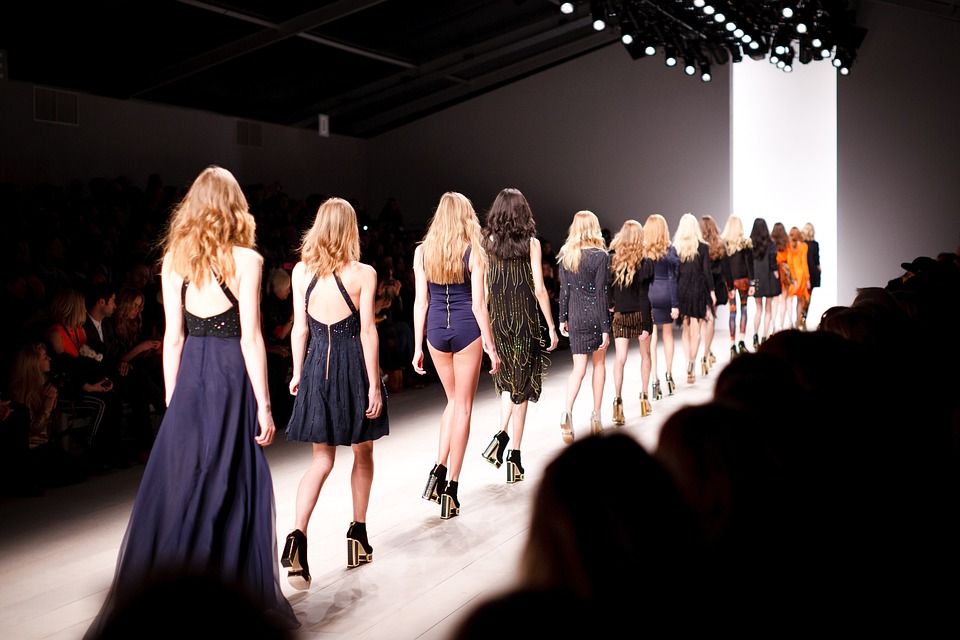Fashion, like a living, breathing entity, evolves with the socio-political climate, cultural movements, and technological advancements of any given era. The journey from the early 20th century to the modern day presents a fascinating study of how style not only reflects societal values but also drives them forward.
1900s: The Edwardian Era
At the turn of the 20th century, the Edwardian era was marked by elaborate and opulent fashion for the upper classes. Corsets were de rigueur, creating an S-shaped silhouette by cinching the waist tightly and pushing the bust forward. Women’s dresses often featured layers of luxurious fabrics adorned with lace, pearls, and embroidery. Men’s fashion was characterized by three-piece suits, bowler hats, and polished shoes, reflecting a sense of formal propriety and grandeur.
1920s: The Roaring Twenties
The 1920s, often referred to as the Roaring Twenties, brought about a dramatic shift in women’s fashion. The structured, corseted clothing of the previous decades gave way to looser, shorter dresses that allowed for greater freedom of movement. The flapper dress, typically featuring fringe and beadwork, epitomized the era’s carefree spirit. Bobbed haircuts, cloche hats, and smoky eye makeup became popular among women, reflecting their newfound liberation. Men’s fashion also became less formal, with the introduction of softer fabrics and sportier silhouettes.
1930s: The Depression Era
The Great Depression of the 1930s had a significant impact on fashion. Economic hardship necessitated practical, durable clothing. Women’s hemlines dropped again, and the bias cut became popular, creating elegant, flowing dresses that used less material but still had a glamorous appeal. Men’s suits became more streamlined, with broader shoulders and narrower waists to economize on fabric without losing style.
1940s: The War Years
World War II brought austerity and rationing, deeply influencing fashion. Clothing became utilitarian, with an emphasis on practicality. Women’s fashion saw the rise of padded shoulders, knee-length skirts, and tailored suits, as they took on roles traditionally held by men. The iconic “Rosie the Riveter” look, featuring high-waisted pants and headscarves, emerged. Men’s fashion was characterized by military-inspired pieces like bomber jackets and trench coats. Despite these constraints, the war also spurred innovation, including the introduction of new synthetic materials.
1950s: The Post-War Boom
The post-war 1950s saw a return to elegance and formality. Dior’s “New Look,” with its cinched waists, full skirts, and accentuated busts, dominated women’s fashion, symbolizing a return to traditional femininity. The hourglass figure was celebrated, and petticoats made a comeback to add volume to skirts. Men’s fashion also saw a return to classicism, with sharp, well-tailored suits becoming the norm. Casual wear, like denim jeans and leather jackets, gained popularity among the youth, influenced by cultural icons like James Dean and Elvis Presley.
1960s: The Swinging Sixties
The 1960s were a revolutionary decade for fashion, coinciding with significant social and political change. The mod movement, led by designers like Mary Quant, introduced miniskirts, bold patterns, and bright colors. The youthful rebellion against conservative norms was evident in the popularity of psychedelic prints, bell-bottoms, and go-go boots. Men’s fashion also became more experimental, with peacock culture encouraging flamboyant styles, including floral shirts, velvet suits, and wide lapels. The hippie movement towards the end of the decade added elements like tie-dye, fringe, and ethnic-inspired clothing.
1970s: The Disco Era and Beyond
The 1970s saw an eclectic mix of styles, influenced by the disco scene, punk rock, and the continuing influence of the hippie movement. Women’s fashion ranged from high-waisted bell-bottoms and platform shoes to wrap dresses made famous by Diane Von Furstenberg. Men embraced flared trousers, tight-fitting shirts, and lavish patterns. The punk movement, with its anti-establishment ethos, introduced ripped clothing, leather jackets, and safety pins as accessories. This decade’s fashion can be characterized by its boldness, experimentation, and diversity.
1980s: The Decade of Excess
The 1980s were marked by extravagance and bold fashion statements. Power dressing became a phenomenon, especially among women entering the corporate world. Padded shoulders, bright colors, and oversized blazers were staples of the era. Fitness culture influenced fashion as well, with leg warmers, spandex, and tracksuits becoming ubiquitous. Men’s fashion embraced boldness too, with the popularity of designer labels, preppy styles, and an overall emphasis on wealth and status.
1990s: The Era of Grunge and Minimalism
The 1990s represented a departure from the excess of the 80s, evolving into a decade that celebrated both grunge and minimalism. The grunge movement, inspired by bands like Nirvana, popularized flannel shirts, ripped jeans, and Doc Martens. At the same time, minimalism became a significant trend in women’s fashion, with sleek lines, simple silhouettes, and neutral color palettes. Men’s fashion also saw a return to more understated styles, with baggy jeans, graphic tees, and sportswear dominating.
2000s: The Rise of Fast Fashion
The early 2000s were heavily influenced by the rise of fast fashion, making the latest trends accessible to a broader audience. Low-rise jeans, bedazzled tops, and cargo pants were emblematic of early 2000s style. Streetwear began to gain prominence, blending elements of hip-hop culture, sportswear, and high fashion. The influence of celebrities and reality TV stars on fashion trends became more pronounced, leading to a more democratized but also more homogeneous fashion landscape.
2010s: The Age of Social Media
The 2010s saw the rise of social media as a dominant force in shaping fashion trends. Platforms like Instagram and Pinterest allowed for the rapid spread of styles and the emergence of influencers who could dictate trends in real time. Normcore, characterized by unpretentious, average-looking clothing, became popular as a rebellion against the highly stylized fashion of previous decades. Sustainable fashion also gained traction, with more consumers becoming aware of the environmental impact of fast fashion.
Conclusion: The Future of Fashion
As we move further into the 21st century, fashion continues to be a dynamic reflection of societal changes. Technology, sustainability, and inclusivity are likely to be the key drivers of future trends. The rise of digital fashion, where virtual clothing can be worn in online spaces, presents new possibilities for creativity and self-expression. The ongoing push for sustainability, from the use of recycled materials to the adoption of circular fashion models, indicates a move towards more responsible consumption.
Fashion’s evolution through the decades showcases not only changing aesthetic preferences but also the shifting values and aspirations of society. From the opulence of the Edwardian era to the democratization of style in the digital age, fashion remains a powerful mirror to humanity’s journey. Whether looking back in nostalgia or forward with anticipation, understanding the history of fashion allows us to appreciate the ever-changing tapestry of style and culture.


